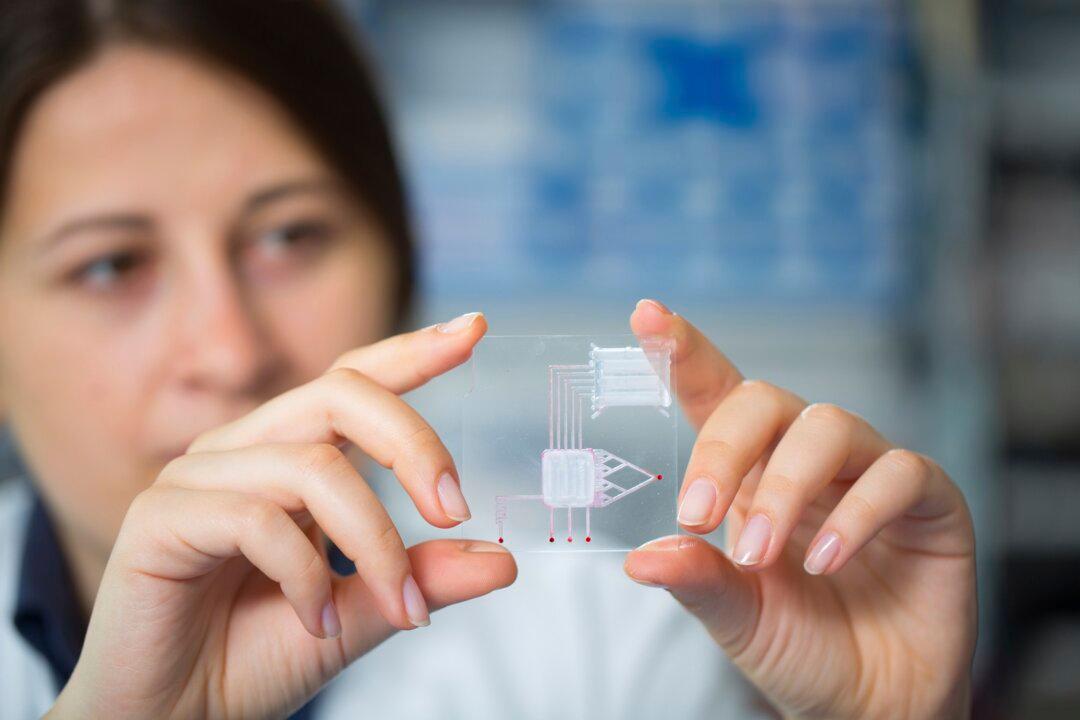A new device—a biological sensor inside a nanochip—that can detect bacterial infections in 10 to 15 minutes will become available in 2016.
Devised by a team of scientists from South Africa’s Stellenbosch University, the device is currently being patented. The Technology Innovation Agency has funded a prototype in preparation for commercialization by April 2016.
Pathogenic organisms infect about 250 million people a year. At least 8 percent, around 20 million people, die. Early detection of infections can prevent many deaths.
Since the nanochip was announced as a project of the university in September 2014, progress has been made in developing additional sensing mechanisms, enhancing its capabilities.
How the Nanochip Was Born
The nanochip for early detection of infection came after a chance meeting between the author and microbiologist Leon Dicks, an expert in the field of superconductors and nanoelectrical devices.
While discussing individual current research, we agreed to work to find a way of detecting infections early and accurately.
The basis for our research was piezoelectricity, which is how crystals convert mechanical energy into electricity or vice versa.
The sensor that was developed for this purpose comprises a nanochip stacked with zinc oxide molecules on top of each other to create millions of nanowires.
Piezoelelectric energy plays a key role in the identification process. When certain materials, such as zinc oxide wires, are squeezed or pressed they generate an electric charge in response to applied mechanical stress. The slightest disturbance in the structure of the nanowires on the chip leads to piezoelectric energy. This is then converted to electrical energy and amplified to produce a voltage reading.
Microorganisms, such as bacteria, are known as flagellated microorganisms. Flagella are almost like little tails that are fixed to the organism. Vigorous movement of the flagella is used to propel the organisms at quite a high speed. These movements disturb the nanowires to generate an electronic signal due to the piezoelectric effect.
Biological Flavor
The nanochip will use a flexible substrate that would generate electricity by movement of a person’s body, thereby, for example, charging the battery of an electronic device, such as a pacemaker.
To be able to use the nanochip for infection detection, a biological flavor was added to the sensor and application by adding a lure that would attract specific bacteria. A silicon chip, measuring 1 cm², was stacked with zinc oxide molecules on top of each other to create a nanowire.
The concept was tested by attaching lysozyme molecules to the tip of each nanowire. Bacteria buster lysozyme was chosen for the test because it is in abundance in human saliva, tears, and milk.
As soon as lysozyme-specific antibodies sticks to the nanowires, the zinc oxide molecules were realigned. This movement was detected by a change in the electrical output in 15 minutes. The lysozome-specific antibodies stuck to the lysozome molecules. The movement caused by this attraction and attachment process disturbed the nanowires, resulting in an electric signal being generated.
What We Found
The investigation showed that the zinc oxide nanowires are promising piezoelectric nanoforce transducers that may be developed into biomolecular detection systems.
